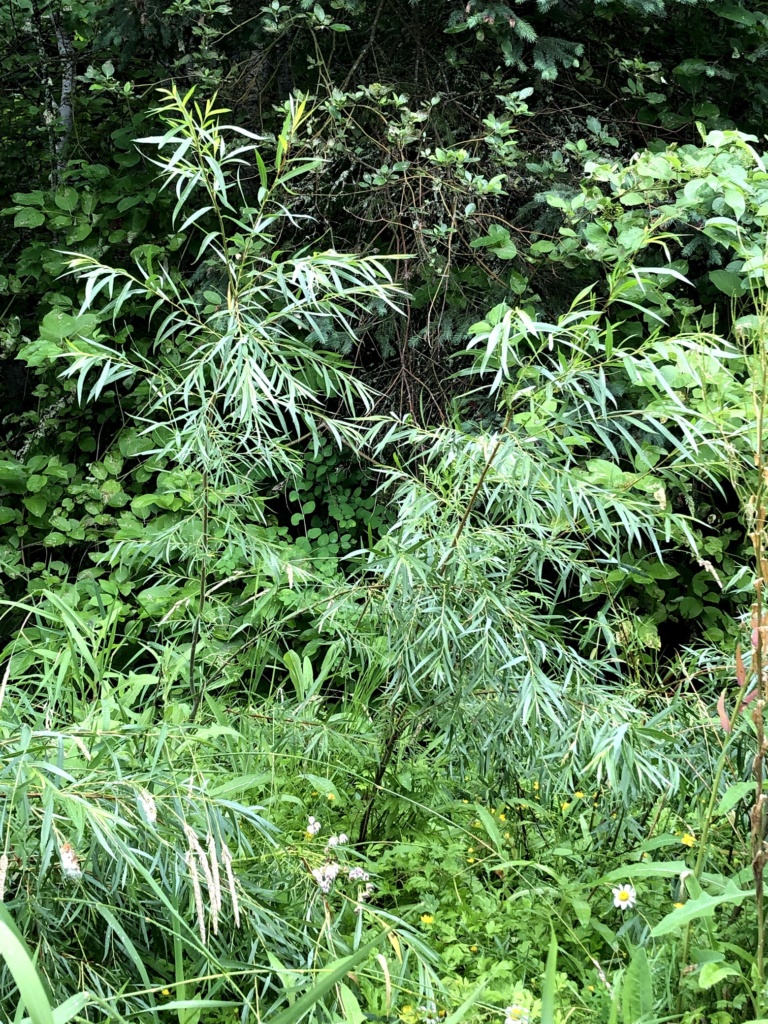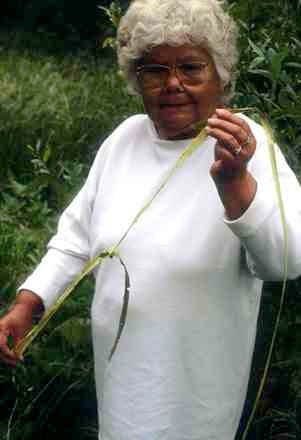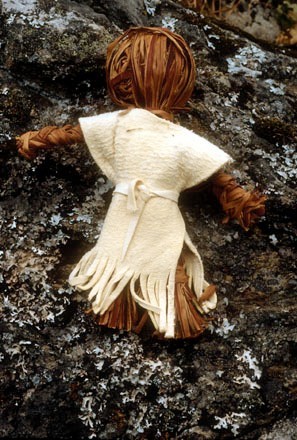Secwepemc name: q’wlsállp

Willows were used as materials in a variety of ways. The sticks and leaves were used for smoking fish and meat. Mary Thomas uses the inner bark for twining in making mats of cattail. The bark was pulled off the branches in the spring, the outer layers were removed, and the fibrous inner strands were used in twining cattail mats, and to edge maple bark trays for pit cooking. Every year her granny used to make the children little dolls of thin strips of “green willow” bark. Willow branches were also used, like those of “red willow” and saskatoon, for sweat lodge frames. They were also used as a framework for fish weirs. Split willow withes were used for sewing bark canoes, and rims of cradles were strengthened with hoops of willow. Willow roots were used for lashing and binding as cordage, according to Mary Thomas.
Ecological requirements: There are several species of native willow that grow in the area. They range in height from 0.5 – 5 meters. Generally willows prefer low to mid elevations; they can tolerate a wide range of soils from the sand and gravel of lakeshore and riverbanks to the drier soils inland.
![]()


